Data center download: How hyperscalers are shaping the solar + storage market
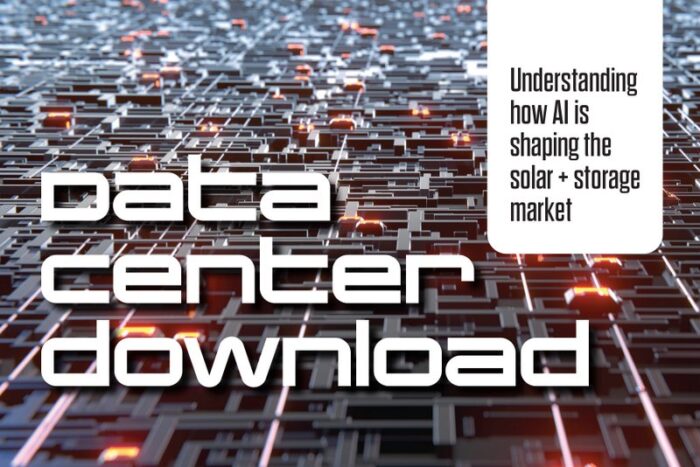
The United States is in a race to meet the increasing energy demands of data centers — particularly those serving artificial intelligence (AI).
By 2030, global data center energy demand is projected to more than double, reaching approximately 945 TWh, largely driven by the growth of AI. In the United States, data center electricity demand is also expected to roughly double by 2030, reaching about 130 GW and representing close to 12% of the total U.S. annual electricity demand, according to the Environmental and Energy Study Institute.
While Donald Trump signed an Executive Order on Jan. 23 to establish the United States as a global leader in AI, the recent passage of his One Big Beautiful Bill Act (OBBBA) serves to undercut an industry that was poised to quickly meet that demand — i.e., solar and storage.
The market for data centers remains strong for the industry, but other energy sources could present some competition for developers. Whether these projects are grid-connected or islanded distributed energy resources (DER), meeting the rising demand of data centers will require fast deployment with flexible and reliable capacity.
Hyperscalers — the large-scale computing providers that enable AI processing and are developing or leasing space in these massive data centers — require a 24/7 power source that can quickly ramp up load capacity to support central processing units (CPUs) and graphics processing units (GPUs). Typically, these projects are in the range of 10s to 100s of megawatts.
That fast surge in power load is one area where battery energy storage systems (BESS) come in handy, says Benjamin Hertz-Shargel, global head of grid edge at Wood Mackenzie, who leads the firm’s research across electrification and grid technologies.
“You have significant ramping of these facilities that require really fast acting response, which of course, battery storage is terrific for, but it’s really a matter of timescales,” Hertz-Shargel says. “On a very short timescale of milliseconds, you can have data centers that are ramping 10s of megawatts in milliseconds, and so it’s very difficult to power.”
Onsite vs. offtake
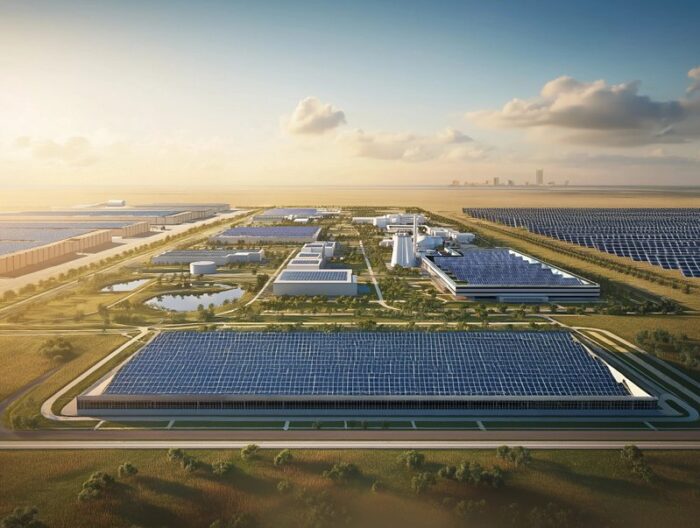
As data center projects are being developed, renewable energy has been the primary power source.
“Today, most of the demand we see is driven by solar and storage projects, and more broadly renewable projects as a whole, are done on behalf of a utility or energy developer, with the data center serving as the offtake,” says Bryan Floth, mission critical project director at Burns & McDonnell, an EPC firm that has worked in the data center space. “These projects are typically grid-scale and offsite but strategically aligned with the grid-connected data center’s long-term energy needs and sustainability commitments. Currently, there are very few current data centers (hyperscale or other) that are using DER as a central component in their electrical Basis of Design.
“However, we are beginning to see more data centers seeking energy storage solutions, exploring lithium, flow batteries, compressed air energy storage and other forms of LDES onsite. However, widespread deployment remains limited by cost, technology maturity and integration challenges,” Floth adds.
Behind-the-meter onsite power generation has gotten a lot of buzz in recent months, with experts from Paces, Stripe, and Scale Microgrids publishing a white paper in December 2024, titled “Fast, scalable, clean, and cheap enough: How off-grid solar microgrids can power the AI race,” which explores the feasibility and challenges of off-grid solar microgrids to meet AI data center energy demands.
“Off-grid solar microgrids have been conspicuously absent from most hyperscalers’ plans, which is surprising given they are likely the only clean solution that could also achieve the scale and speed requirements described,” write the paper’s authors, Kyle Baranko (Paces), Duncan Campbell (Scale Microgrids), Zeke Hausfather (Stripe), James McWalter (Paces) and Nan Ransohoff (Stripe). However, the authors conclude that these behind-the-meter systems have so far not been pursued because of such factors as cost, skepticism from data center developers, and industry inertia.
“Off-grid solar microgrids offer a fast path to power AI data centers at enormous scale,” the authors argue. “The tech is mature, the suitable parcels of land in the U.S. Southwest are known, and this solution is likely faster than most, if not all, alternatives (at least at the time of writing this paper). The advantages to whoever moves on this quickly could be substantial, and the broader opportunity offers a compelling path to rapidly securing key inputs to U.S. AI leadership.”
While this white paper argues in favor of microgrids as a solution to meeting data center power demands, the current projects that include onsite power generation don’t quite meet the standard.
“The U.S. Department of Energy’s official definition of a microgrid is ‘a group of interconnected loads and distributed energy resources within clearly defined electrical boundaries that acts as a single controllable entity with respect to the grid [and can] connect and disconnect from the grid to enable it to operate in both grid-connected or island-mode,’” says Jeff Casey, business director, transmission and distribution, at Burns & McDonnell. “So, if you look at the operative words in that definition being ‘a group of loads and resources to operate in both grid-connected and island-mode,’ you’d probably answer that and say, ‘No.’ Most hyperscale data centers are unlikely to have sufficient onsite renewables and storage to operate fully islanded as microgrids. In the near term, hybrid approaches that enhance resilience without requiring full islanding are more practical and achievable.”
Instead, data center developers have been pursuing other models.
“There is growing interest in exploring the use of behind-the-meter generation and storage of all types co-located at data centers as a ‘bridge-to-grid’ solution, but so far, we haven’t seen these solutions deployed on a data center project for grid-connected systems,” says Keegan Odle, VP of transmission and distribution at Burns & McDonnell. “Instead, the main application we hear about leverages onsite energy storage combined with islanded generation to accelerate power delivery to new sites, essentially providing a faster intermediate path to market than utilities can currently offer. Battery energy storage systems, depending on configuration and technology, can provide load smoothing, spinning reserve, redundancy, and increased power generation efficiency when combined with generation assets.”
BESS is a growing segment of the data center development market.
“We’re seeing interest in both buying and operating energy storage projects, ranging from advanced lithium-ion battery systems to innovative long-duration technologies like flow batteries and compressed air energy storage (CAES),” says Tisha Scroggin-Wicker, director of decarbonization at Burns & McDonnell. “This is reinforced by the need to manage higher power densities, integrate more renewables and produce reliable, flexible power in the face of grid constraints and rising energy costs. However, actual deployments for fully grid-connected, large-scale data centers are rare. These solutions are not yet mainstream.”
The data center market is currently segmented, according to Allison Feeney, research analyst, power and renewables, North American utility-scale storage, at Wood Mackenzie.
“Historically, how it’s worked has been that a developer will build their solar and storage project, have it connected to the grid, and then a hyperscaler will sign a power purchase agreement or an energy storage service agreement to contract for the capacity of the project,” Feeney says. “My understanding is that even now, there’s been a lot of hype around co-location of solar and storage with data centers, but it isn’t really happening as much as people say it is.”
Reliability is a big reason why.
“Hyperscalers are all about reliability, and so they really want to be connected to the grid for that purpose,” Feeney explains. “I think they’re interested in co-location because it might be faster.”
Having grid-connected power aligns more with the hyperscalers’ business model, Hertz-Shargel adds.
“They’re not used to supplying generation or relying on local generation,” he says. “There has been a lot of hype, but we see a very small percentage of projects, I believe it’s around 6%, have some form of co-located resource.”
One of the big challenges of co-locating solar and storage with data centers is land availability.
“With solar, land is a challenge for siting next to a data center, even though these can be big campuses,” Hertz-Shargel says. “Storage is just expensive, so it’s a difficult proposition, especially given the size. If you’re now in the hundreds of megawatts, it’s a challenge just to site storage.”
However, Hertz-Shargel notes that developers and utility companies are “increasingly asking data center developers to bring a battery” or some type of local, dispatchable power to a project to alleviate capacity interruptions. He adds that most data center interconnection agreements have negotiated interruptibility terms, which allows a utility company to temporarily stop or reduce electricity supply to a customer.
Hertz-Shargel co-authored a report in Wood Mackenzie’s monthly Horizons series, titled “U.S. power struggle: How data center demand is challenging the electricity market model,” published in June, which shows that these interruptibility terms are a growing trend.
“Utilities are not known for innovation, but because of their integrated planning processes, they are best placed to advise data center developers on how to shorten development timelines,” the Wood Mackenzie report says. “Among the critical factors that can accelerate projects are allowing interruptibility, alternative project sizing, utilizing grid enhancing technologies, differing ramp schedules, creative power contracts or other out-of-the-box options. They can also advise the data center on where it should connect.”
Withstanding the types of power loads that data centers demand is a challenge for the grid and local resources alike, Hertz-Shargel adds.
“You need to sort of overbuild local resources to deal with those kinds of voltage irregularities that you’re going to see from a data center,” he says.
Hertz-Shargel notes that another market development in the data center space is that projects that were originally planned as behind-the-meter systems “are sitting in queues, and they’re not progressing.” In response, many of them are converting to front-of-the-meter generation.
One example of that trend is the Amazon Talen deployment in Berwick, Pennsylvania, which features a data center co-located with the Susquehanna nuclear facility. The developers switched it to front-of-the-meter when the project ran into trouble on the interconnection side.
“There’s lots of movement toward moving to front-of-the-meter rather than increasing the amount behind the meter,” he says. “There are a few big behind-the-meter projects that are moving forward. One is Meta with Williams on the natural gas side and the Crusoe project in Texas is also natural gas. Some are moving forward, but generally it’s proving to be a big stumbling block to do behind the meter.”
Data center load profiles
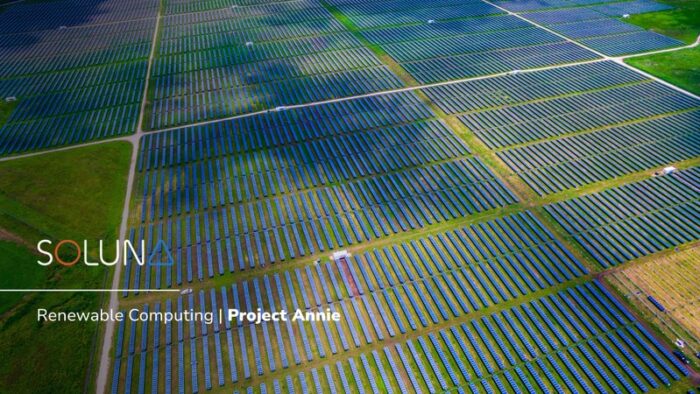
Developing data centers is particularly challenging because of their higher load profiles compared to other businesses. Sizing up a data center can vary from project to project.
“It can slightly depend on the type and purpose of data center that we are talking about, but as a general answer, the power demand characteristics of a data center are high intensity (hundreds of megawatts), energy dense (100-400 watts per square foot), 24/7/365 demand, with minimal variability and high load factor,” Casey says. “This is categorically different than most other buildings and business categories. Some industrial manufacturing facilities and hospitals may have comparable characteristics but not have all of them at the same time in the way that a data center does. Many buildings have consumption that follow the sun, have far less criticality, less load factor, and minimal redundancy requirements.”
Hertz-Shargel agrees that the load profiles can differ depending on the workloads of the facility, but the biggest challenge is the swings in the load.
“We still don’t have complete visibility,” he says. “We could show that some facilities that are at the hyperscale scale can have periods of relative stasis, but then they have significant ramps of up to 30-40% of load.”
These swings can be 10s to 100s of megawatts. Because of the nature of how GPUs work and the parallel computations involved with AI, the computing processors can all of a sudden load up.
“All of the GPUs will start to do work, and then they will briefly pause their work and come down to the CPU level to collate results and to figure out the next step, and that results in these millisecond level swings in power,” Hertz-Shargel explains. “At the millisecond time scale, you can have tremendous fluctuations.”
Offsetting data center demand
How much of an offset that can be achieved with solar + storage depends on several factors, such as cost and land availability.
“It’s important here to distinguish between technical feasibility and practical implementation. With enough capital, land, and infrastructure, you technically can build onsite renewables and storage to support a data center,” Casey says. “But in reality, data centers will remain grid-tied and reliant on multiple utility feeds, backup generation, and robust interconnection for reliability. Renewable integration will continue to lean heavily on off-site PPAs, REC purchases, and large-scale grid-connected solutions. The economics and reliability metrics still strongly favor the traditional architectures, even as sustainability goals drive creative solutions.”
Wood Mackenzie identifies data centers as large load offtakers, and Feeney says that the amount of solar and storage forecasted to be coming online by 2030 should meet that demand.
“In our latest power report, we have about 85 GW of large load coming online by 2030, and that is well within how much solar and storage is anticipated to come online in the next five years,” she explains. “However, that’s serving the whole grid, not just these large-load customers. We’ve forecasted that solar and storage, along with the existing fleet of wind and natural gas, will be able to meet this demand, but it’s to be determined, what the prices will look like.”
Hertz-Shargel adds that solar and storage are crucial to meeting the expected demand of data centers, especially compared to other power sources such as natural gas.
“While behind-the-meter solar and storage deployments at a data center may be a little bit more speculative and less clear how pervasive it’ll be, we feel like solar and storage are essential for scaling large loads to where they need to get to in general, which is often going to be front of the meter, because natural gas has significant limitations,” Hertz-Shargel says. “Turbine deliveries are roughly capped at 10 GW per year to the U.S., at least for the next few years. Assuming that continues, it gets you to roughly 50 GW of new deliveries by 2030.”
In comparison to Hertz-Shargel’s estimated total of new gas power generation expected to come online over the next five years, Feeney adds that Wood Mackenzie is forecasting about 40 GW of solar coming online each year in that same span — that would be about 200 GW total. Feeney adds that U.S. developers are expected to add more than 100 GW of storage by 2030.
“There’s a lot of solar and storage that are going to be built,” she says, “and they can meet the load.”
Hertz-Shargel adds that gas projects take a long time to build and are more costly than solar and storage at about $2,000 to $2,800 per kilowatt.
“It’s much easier to buy existing capacity than to build natural gas,” he says. “Natural gas has a lot of challenges to come online. Solar and storage is much more ready to be deployed, and so it will be essential to have that in order for the U.S. to achieve its AI competitive ambitions.”
Sizing solar + storage for data centers
How developers are making system sizing decisions comes down to each individual project without any clear trends.
“There’s no one-size-fits-all answer,” says Brendan O’Brien, business development, power, Burns & McDonnell. “The best emerging technology for a data center is highly contextual based on its specific application, load profile, and operational requirements. Traditional enterprise or cloud data centers typically have steady, predictable loads, while AI-focused data centers can experience rapid, significant load fluctuations that add complexity to both grid-connected and behind-the-meter designs.
“For storage, non-lithium solutions like flow batteries, which can manage extended discharge cycles and supercapacitors, which excel at handling rapid load cycles with minimal wear, make them particularly suitable for AI workloads,” O’Brien adds. “From an EPC perspective, the optimal storage solution depends on the facility’s size, location and operational profile. As data centers grow in scale and complexity, success hinges not just on the storage technology itself, but on how it integrates with control systems, inverters, and backup power to form a resilient network.”
Hertz-Shargel says it’s too early to consider possible industry trends in the data center market.
“There are very, very few projects. It’d be hard even to speak about clear trends and how they’re sizing these facilities,” he explains. “Some of the ones where we’ve seen mention of co-located storage [involve] companies that are newer entrants who are the most ambitious, and they don’t necessarily have a track record. Or it’s not clear they will pull it off, let alone that they know what the best practice would be.”
Right now, it’s a lot of talk.
“I think it’s safe to say, it’s premature to speak about standard sizing or approaches to integrating solar and storage to data centers, because it’s very, very early, and few projects are making their way through the queue,” Hertz-Shargel says. “Even if there’s part of it that’s being engineered, it doesn’t mean that it’s happening. We don’t even know if that design is going to be replicated or be successful.”
Speed of development
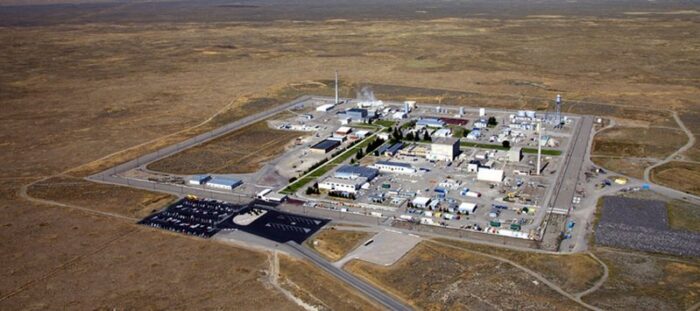
Hyperscalers are looking to build data centers at a rapid pace. But these projects still take time to develop.
“It depends on the scale and size of the facility,” Floth says. “If you were to start developing a data center today, you might be looking at 5-7 years depending where in the world you are, what the connection timeline looks like, and what permits are required.”
Still, the energy source that can meet that demand the quickest will ultimately win out. Will it be solar and storage, natural gas, nuclear or something else that wins the race?
“It’s not about competition or a zero-sum game. It’s about resource diversity to meet the 24/7 demand of a data center,” says Kevin Fox, onsite energy and power engineering manager at Burns & McDonnell. “Solar can complement the mix, but since the sun doesn’t always shine, the capacity factor alone means it will always need to be paired with other sources like storage or natural gas to yield reliability. As a country, we are bullish on nuclear as a key source of our nation’s energy future, including serving the needs of data centers.”
However, solar does have some advantages in today’s market.
“Solar is very cheap right now,” Feeney says. “We have a lot of manufacturing capacity, so actual capital cost is quite cheap compared to other energy sources.”
Feeney adds that new natural gas power plants are facing supply chain constraints.
“There are only a couple of manufacturers that make gas turbines, and they haven’t shown a lot of interest in increasing that, even though there’s increased interest in buying them,” she says. “From a supply chain perspective, there’s a lot more solar available than gas turbines.”
Speed to development is another advantage that solar has.
“You can build very small solar plants if you want, or much larger. There’s a degree of scalability to it,” Feeney says. “But for gas, these projects are generally quite large. There are exceptions, of course, but they take a long time to build and a long time to get their interconnection. If you’re starting now, a lot of solar projects have been in the queue for five or seven years already. They’re ready to be deployed now. Whereas gas, if you’re starting up now or last year, it’s going to be a long time to interconnect.”
While utility companies might prefer to develop natural gas power, Hertz-Shargel says that hyperscalers want renewable energy.
“I think utilities are certainly leaning toward gas. They’re sort of predisposed to lean on gas as what they consider a dispatchable, controllable technology,” he explains. “But the hyperscalers, the big tech companies, do have sustainability goals that they have in many ways tried to keep to even if they haven’t always been successful. They have told their partners that they do not want to be tied to gas long term. So that is their reluctance to use onsite natural gas, because it really locks in that dependence. They much prefer solar and battery storage to power their facilities.”
Market longevity
While data centers might be a hot topic today for solar and storage developers, the market could change in a hurry.
“There’s a lot of questioning among investors and others about how long the scale of this build-out will happen, what the value will look like in 10 years, if there is an overbuild, or if capacity still has the value it does today,” Hertz-Shargel says. “One of the reasons there’s value is you can hedge your bets a little bit by being transmission interconnected, because then you can still provide value, rather than if you park it behind a data center, and then you’re a little bit coupled to that particular deployment. If that one facility were to walk away or get downsized, it could be complicated.”
O’Brien says that project delays are already causing market shifts.
“As data centers need more energy and face more complicated requirements, the industry is starting to move toward using a mix of different storage and generation technologies,” he says. “This shift is happening faster because it’s getting harder and slower to get permits, procure equipment and connect to the grid. As a result, there’s a growing need for energy solutions that are flexible and reliable, ones that can keep data centers running independently and help manage changing power needs.
“Ultimately, what’s installed today will likely change as needs and technologies evolve. Owners seek adaptable, future-proof designs, and we work closely with clients to create power strategies that can scale and adapt as the industry innovates,” O’Brien adds.
Don’t count out nuclear power from entering the chat.
“Nuclear energy could be a great match for the large, power-hungry data centers,” says Gabe Chavez, nuclear project manager at Burns & McDonnell. “Data centers need a reliable and resilient power base, and nuclear has a strong record for high-capacity factors in extreme conditions. It’s also carbon-free generation, making it a viable option for offtakers to meet environmental goals.”
Furthermore, the OBBBA could impact the renewable side of meeting data center energy demand.
“It’s too early to draw broad conclusions,” Casey says of the OBBBA’s ramifications. “Data centers, like any business, will optimize within the regulatory and economic frameworks in place. We’re seeing clients navigate this shifting landscape in real time, and our role is to support them in selecting the right mix of energy solutions for their technical requirements [renewable or otherwise] based on what’s viable, available, and aligned with their long-term goals.”
Feeney says that sussing out the impacts of the OBBBA are “a little complicated.” While Trump has mandated that the U.S. win the AI race, this new law places hurdles in front of those goals.
“There’s definitely a lot of interest in hyperscalers, and these people that are developing data centers for renewables, and they also seem like an elastic price point. They’re willing to pay a lot of money for this compared to other offtakers,” she says. “But on the other side of the coin, on the federal landscape, there’s been a lot of changes to ITC and PTC through the new reconciliation bill, and so that’s going to make it more expensive. Maybe the hyperscalers will pay for it, but other offtakers might not be as interested in paying for more expensive solar and storage. We’ll see which side wins, but there’s still pending guidance. We don’t know how that’s going to shake out yet. It is interesting on the federal side, kind of going at it both ways.”
While current projects will move forward, Hertz-Shargel says that the bill will negatively impact the administration’s goals.
“I think it’s safe to say that, aside from the build-out that may happen hopefully in the near future, given the safe harbor provisions that allow projects to move forward now, that any limitations to solar and storage after that period due to the loss of the tax credits will directly be impacting the administration’s goal, their AI ambition,” he says. “It really is defeating one of their principal strategic objectives to put in those provisions to end those credits for solar, and the FEOC challenges for storage.”
However, Hertz-Shargel says that state-level initiatives could play a role in expanding solar and storage to meet the rising load demands of data centers.
“Beyond grid-connected solar and storage and the ones that are co-located with data centers, there’s also how the rest of the demand side or distributed [resources], like even residential, can play a role,” he says. “I do see states taking action to enable virtual power plants.”
Hertz-Shargel highlights states like Colorado, Illinois, Maryland, and Virginia taking action to expand renewable power.
“There’s a lot of initiatives around states requiring utilities to invest more in distributed energy, including at the small commercial and residential level,” he says. “That is increasingly being viewed as part of the state’s ‘all of the above solution’ to deal with load growth and to give utilities more tools. I think that that is going to support residential storage. That’s another important set of projects that are likely to get lifted as we see challenges toward some of these utility-scale projects.”
Bradley Kramer is managing editor of Solar Builder.


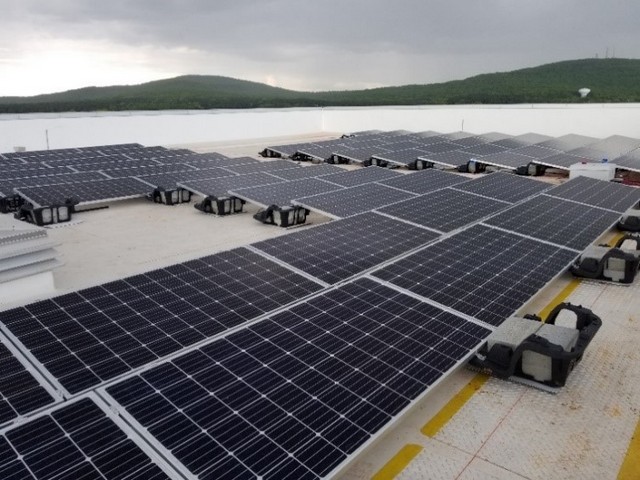
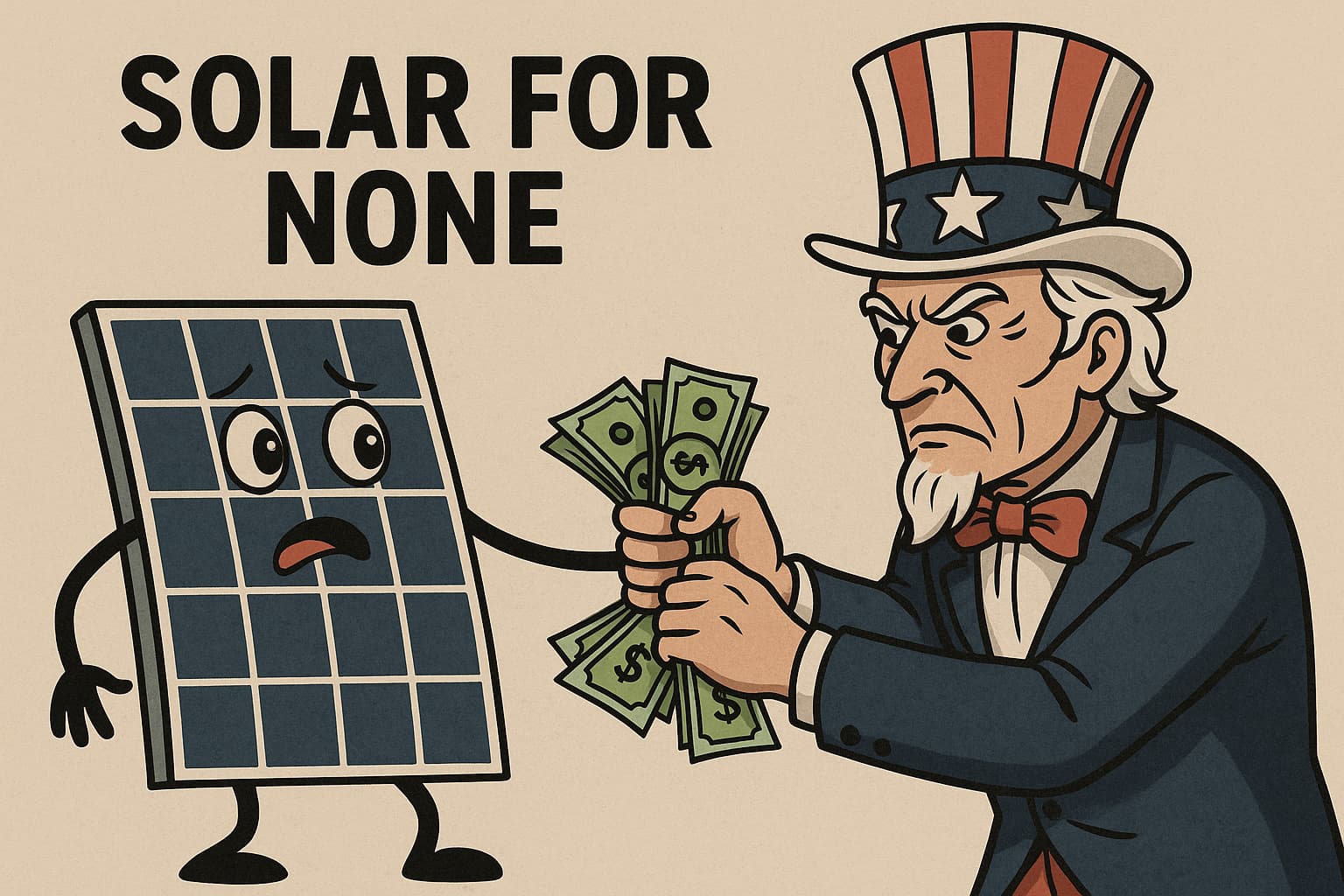

Comments are closed here.